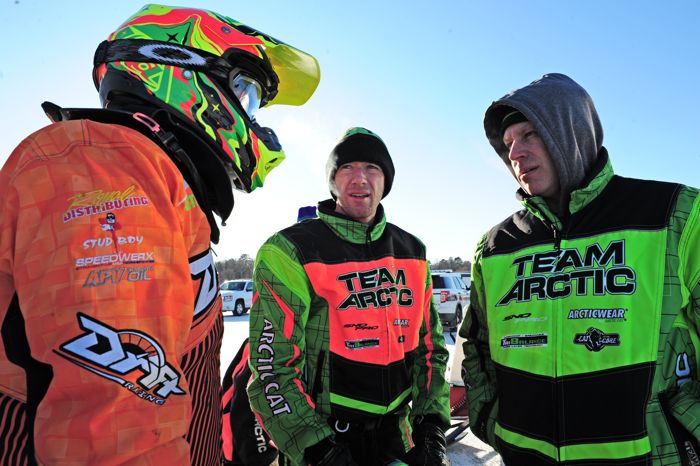
With the 2015 race season officially over (I’m counting this summer’s racing as part of the 2016 season), Team Arctic Race Manager Mike Kloety (at right, with racers Zach Herfindahl and Wes Selby) gives us his perspective on the highlights, lowlights and everything in-between.
AI: That was another exceptional year for Team Arctic in all the various racing disciplines. There were monument wins (the Soo 500, X Games), key Championship titles (USXC cross-country, ISOC snocross, enduro Triple Crown) and a multitude of race wins. How do you see last season and what were the highlights from your perspective?
Kloety: Last year like most of them pass by so fast for me it is crazy. I finished the year pretty excited where Team Arctic is at and our future in racing. A few highlights that stick out the most would be the success of the new Factory 600 class in cross-country racing, the performance of the new Arctic Cat 600 C-TEC2 engine package in Speedwerx modified form at the SOO I-500 race and the introduction of the ZR4000 RR in both snocross and cross-country racing for young racers getting started in the sport.
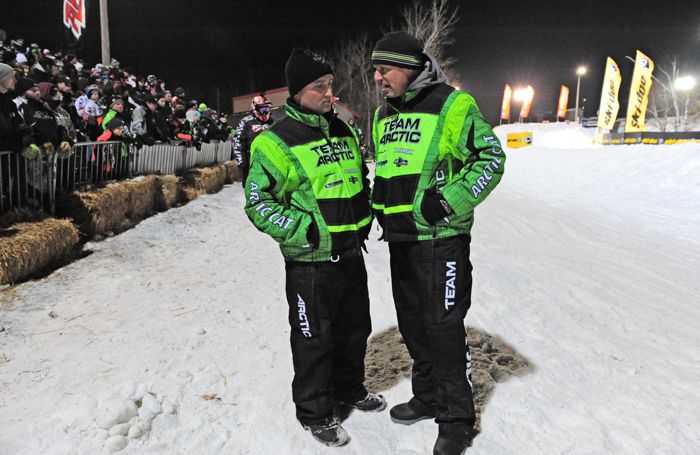
AI: Acknowledging that you can’t win them all, were there any tough losses this past season that disappointed you?
Kloety: The biggest loss was to old Mother Nature, which forced the cancellation of some key events like the Winnipeg I-500 as well as the World Championships of Hillclimbs in Jackson Hole. To have as many races as we did illustrates the passion of racers, promoters and affiliates.
On the track, the Iron Dog cross-country race still seems the most challenging to conquer because there are so many variables that affect the outcome. I think under more wintery condition the outcome would have been different but for sure that event was the biggest disappointment for me. Not just the results, but more because I know how much effort and money that event takes for the racers to attempt. To not be able to race it like you want and planned is frustrating for everyone involved.
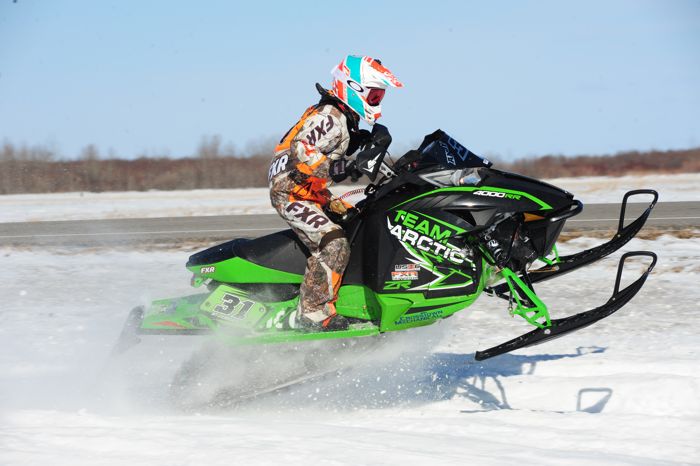
AI: It’s accurate to say that Arctic Cat completely dominates USXC cross-country at all levels. To what do you attribute such overwhelming success, and is it sustainable?
Kloety: I think we are strong in USXC racing for many reasons. First of all, we build sleds for this type of racing including the young racers with the Sno Pro 500 and now the ZR4000 RR & ZR6000 R XC models. This helps us develop relationships with many talented riders over the years.
I can go back to 2001 – the last year of cross-country racing prior to the Pat Mach/USCC era – and we had a dominant team then. I feel our current cross-country race team is as strong today, which that tells me our product and support of this venue is working pretty good. Our future looks strong and there is a lot of talent here to work with if we can keep the wolves away from our riders, if you know what I mean!?
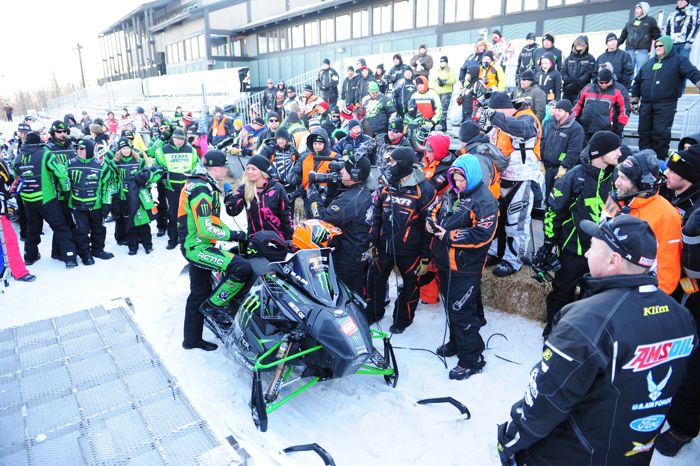


AI: From what I saw in ISOC National snocross this year, Tucker obviously continued to rule the Pro class; Team Arctic racers won most of the Transition & Jr Novice classes, Trent Wittwer was dominate in Amateur, Dan Benham and Montana Jess owned the Sport classes, and both Corey Watkinson and Tyler Adams won Pro Lite finals. Is it reasonable to expect even better results than that?
Kloety: Man, people who want better results than that don’t realize what it takes to win in national-level snocross today! It wasn’t too many years ago we were weak in Sport and nearly non-existent in Pro Lite. We knew it would take a few years before the success of the Sno Pro 500 in the Jr classes would help build our program but I felt that, along with one or two additional riders riders, was the way we had to go. Now I think our snocross effort is definitely moving in the right direction and were seeing the success.
Of course, it’s racing so we are challenged every day to keep it that way. I would love to be deeper in numbers in all classes than we are but the sport in general is also a lot smaller than what it was 10 years ago. We try do the best we can with what we have and really I would not change much. As long as we can keep the players we have I am looking forward to the future of Team Arctic’s SX effort.
AI: My read on the hillclimb season is that Team Arctic struggled a bit in the first half of the schedule and then rebounded the second half. What’s your opinion?
Kloety: Hill climb racing is just that hard to figure out. I think the lack of snow was an issue throughout the season, with maybe the exception of the last race at Grand Targhee. One thing I do know: Our racers don’t like to loose and worked hard to end the season on a high note. Hill climbing is won and lost by split seconds that all add up, so getting your sled to work with you is key and the more seat time you have the better the chances for winning. I was glad to see and hear all the hard work was paying off at the end for our racers, which makes for a better off-season for all.
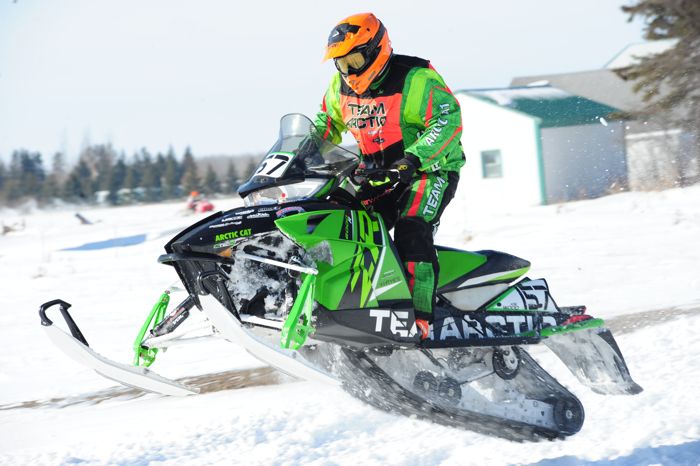
AI: What is your opinion of racing consumer-based machines with production EFI engines in cross-country this past season?
Kloety: As I said earlier, this was a highlights of the year. I like the direction it is going and I know there will be the occasional speed bump for all to work through, but in the end it will benefit all aspects of our company, from Engineering, Racing and Marketing departments, as well as our dealers, customers and fans. We can all relate to these sleds better than sleds with limited-production race engines.
AI: Are you learning things in racing that will improve consumer sleds?
Kloety: Absolutely. I am 100 percent confident that racing speeds up the learning and durability process like no other form of testing. Racing creates excitement not only in-house but also around the sport of snowmobiling and to me that is a win-win.

AI: How many years until we could see snocross sleds with EFI engines, and why hasn’t it happened yet?
Kloety: Well it has happened in the past just not in Stock form – Blair Morgan ran a Black Magic EFI motor when he was on Arctic Cat and Dan Ebert raced one as a Semi Pro – but it’s been a lot of years.
Honestly, I think brands and teams are nervous about all the extra work required to develop an EFI system for racing. Carburetors are very forgiving and easy to quickly calibrate a lot of sleds at a race venue. Switching to EFI is seen as a huge initial effort to get it to the racetrack. Hundreds and maybe thousands of hours of programming are required on the front end, before it ever gets to production. Embracing that workload and the expense associated with it has been the primary hurdle for the racing industry up to this point.
However, it could really happen any year now. The current race rules are being gone through by ISR and the manufactures, and are being adjusted to make getting into racing with an EFI motor package more friendly. I was hoping the success of the Factory 600 class in XC racing would lead to similar class rules in SX more quickly but it looks like it may take longer than I would like to get the other colors on board.
AI: What needed improvement on the ZR R snocross and cross-country race sleds from last season, and when will the 2016 machines be unveiled?
Kloety: I feel, and I hope that our racers feel, that our product is good right out of the box and that upcoming changes will be aimed at detail things that make the racing experience better for them, such as easier to work on and maintain, and be more durable. Cost is a big factor to keep & attract new people into the sport, so that is always a concern when this question comes up. It is hard to make huge gains today as sleds are so good and competition is close so we work hard to gain ski lengths rather than sled lengths. Thus you see some older year sleds still competitive. There is always a little thing here and there that makes them perform better than last year’s sled and I think we have done that again as well.
As far as when we will show our sleds, I think Hay Days will be the soonest we could show our hand for this year.

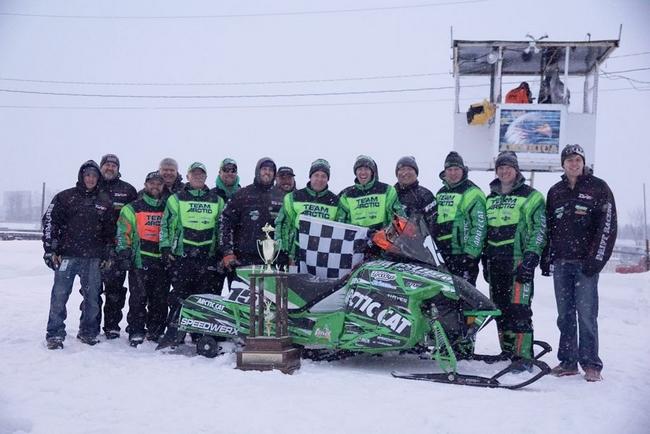
AI: The three purpose-built enduro sleds that came out of the Race Shop were hugely successful, taking 1st, 2nd and 8th in the Soo 500 and winning the MIRA No Bull Triple Crown. Is that a sled and program that can be expanded in the future?
Kloety: I like what I see happening in the enduro racing scene. The SOO 500 is a fun race that involves an entire team, and I would like to see two more of these type events during the season at some point. The Triple Crown is a fresh idea and seems to be gaining support.
At the beginning of the season it wasn’t our original plan to build three Soo sleds with the Speedwerx-modified Arctic Cat C-TEC2 engine. Brian Dick and Wes Selby were going to run one no matter what. A test sled was built and Wes raced it in the Open class at a couple USXC events, where it showed good potential. Well, it wasn’t too many days after those races that the call was made that we needed to build a second and then a third sled.
Looking back the hard work from many including the Engineering team, Speedwerx (who did the motor package) Al Shimpa and Ron Gilland (who helped tune it), the crew from Christian Brothers Racing and our Race Department, all of whom pitched-in to get the three sleds to the SOO… it was crazy to think how it turned out! Not one of those sleds even ran before getting to Michigan and the first rounds of qualifying that Monday afternoon!
Once on the track the sleds’ speed looked good all week. Brian was on top of the suspension and tested a lot of set-ups during the week, which helped but also added to the work load. I know the race didn’t go the full distance but there was a long stretch that Wes was able to hold off the top running red sleds and drive away from them, so we really feel we have a project sled that can be competitive at this event for years to come.
We’re considering building a few turnkey sleds for this coming season at Christian Brothers Racing, for teams to buy and go racing with. My vision is to have them all built and ready for the owner to pick up at one of the early USXC Ice races and have a test and tune day with them before heading home with their new owners. Time will tell we all have lots on our plate but I would really like to pull this off. If someone reading this is interested, please give the race department a call and we can discuss it further.
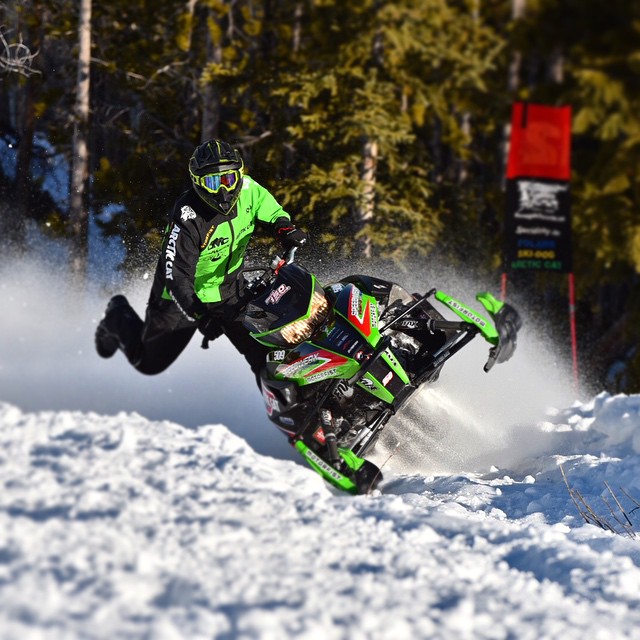
AI: Let’s talk hillclimb sleds for a moment. From what the racers tell me, there’s a disconnect between the kind of snowmobile that works best for play-riding in the mountains, and what works best for the uphill slalom courses that characterize this form of racing. What’s you’re opinion on that?
Kloety: Yes I think the courses being raced on today might call for different style sleds and sleds that do other things well that back country powder rider sleds don’t.
AI: Garth Kaufman and Wes Selby built hillclimb and hillcross sleds based on the snocross race chassis and were very successful. Is that the direction that the sport is going?
Kloety: I think what you see there is the crossover from what we learn racing snocross being applied to other venues, similar to what you saw in cross-country a few years back when racers were converting snocross sleds for it.
Many years ago the hill climb organizations decided that the best thing for their racers was to go pure-stock for their Stock class racing. There was a lot of concern as to how that would work as typically there were lots of hill climb kits being filed with ISR by the manufacturers, so racers would take other performance sleds and build hill climb sleds out of them by adding rail extensions and longer deeper lug tracks. But, looking back now, things worked out well with the true-stock focus. Hill climb racing is stronger than ever.
Then if you look as some of the hill courses they are getting rougher all the time with bumps and jumps that SX sleds handle very well. If you wanted to add another reason they did what they did you could say they are familiar with how that chassis feels and works.
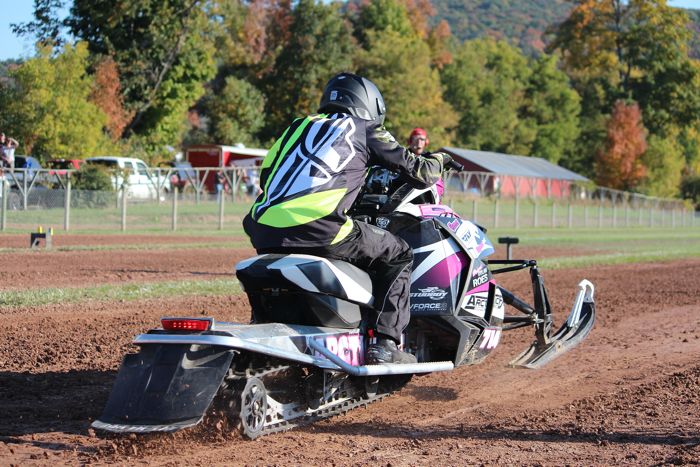
AI: What is the current state of drag racing and speed runs, and how is Team Arctic doing?
Kloety: At one time the number of ISR Drag/Speed Run affiliates was larger than any other form of snowmobile racing. Today there aren’t as many and I know ISR would like to change that. My opinion is that there got to be way too many classes and it got confusing and expensive for a weekender to come and race to have fun. I’m hearing there are some changes coming for this year at Hay Days and I think it is a step in the right direction for the sport but only time will tell.
I will tell you Arctic Cat still has some extremely dedicated drag and speed run racers who are putting up some serious speed and ET numbers, with crazy horsepower being reported.
I still laugh when I hear Roger Skime say, “Racing started right after the second sled came off the line!”
I have no doubt in my mind that’s true, and I would wager that the first race was a drag race. We need to get back to all four manufactures having a sled in the same class that the fans can relate to. Years ago, that was the best race to watch and what brought in the fans. I don’t think the Red team has had a new model 800cc at Hay Days for many years now and to me that is crazy that was once the class with the biggest hype around it.
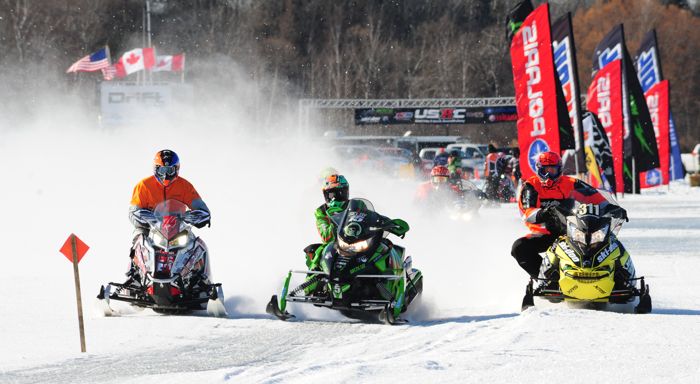
AI: When I watch the stock ZR race sleds compete on plowed ice cross-country courses, they look nearly as smooth, fast and quick through the corners as the old ZRs from the 1990s. Which makes me wonder, why isn’t there stock class oval racing anymore? Is there any effort for its reintroduction?
Kloety: Funny you bring this up, are you sure you don’t have some inside sources around here?
Anyone that watched the USXC Pine Lake race was treated to the best ice race I have seen in a long time with what five racers finishing within a couple seconds, and the top-3 just about bumper-to-bumper for the last 4-5 laps! Everyone has noticed that these new production sleds can be tuned to handle very well on the ice. Even at the SOO there are a lot more late model sleds and fewer Polaris Edge chassis.
[Arctic Cat’s] Joey Hallstrom attended the Eagle River oval races this past season and his comment was that the sport needs to get Stock-class oval racing back. There are others who agree. Todd Achterberg, who now owns ISR, tried a couple times to give Stock oval racing a chance, but it didn’t seem to get the backing of the current oval racers. I also felt it was worth a shot then and again now.
USSA actually made ISR aware at the recent ISR meeting that the circuit wanted the Factory 600 class added to the Stock class. They’re going to use the current cross-country Factory 600 rules with the goal to build oval Stock rules to make it easy for people to build sleds and go racing.
In my eyes the best place to get racers from is the USXC pool, there are plenty of good ice racers in many of the classes that with some track time and tuning help I feel would put on one hell of a good Stock class race at Eagle River, or any oval track for that matter. It will take some time and effort to make this happen but I think it is the best shot at giving Stock oval racing a legitimate chance of coming back.
I would also like to see what interest some of the younger kids have as the 500 Sno Pro and ZR 4000 RR also would be fun sleds to Oval race and I think the rules could be the same for both these and the 6000’s. Give it some time and let’s see what happens. If anyone has good ideas to add to this feel free to give us a call.

AI: I’ve heard that there are efforts to possibly detune the current 600cc sleds for use in Junior and Transition classes in the future, so that they’re equivalent in performance to today’s 85-hp and youth sleds. Is this a possibility and how soon might this happen?
Kloety: Yes we have had a couple tests and everything we have seen shows good promise. So much so that the snocross race circuits are pushing these rules to occur for this coming season and we are finalizing the kit’s that will be needed as we speak.
The kits for the 600s include a lockdown for the engine power valves, a 50% throttle lever kit, a CDI box with a lower rev-limit, plus a clutching rpm limit for engagement. These kitted 600s are nearly identical in performance to the current sleds in those classes, so current racers won’t need to get a new sled.
That said, I can foresee a situation similar to when the Sno Pro 500 came in to compete against the Ski-Doo Freestyle: there will most likely be some growing pains as we get more people tuning on sleds but in the end this appears to be what the sport wants. I have more mixed emotions than the other colors because Arctic Cat pretty much owns these classes today and it gives us a great chance to meet and work with some great families and try get them hooked on the Arctic Cat brand. But I also see the need for competition and for sure the snocross race sleds today are built specifically for racing, so it makes sense to kit them for youth racing. Again time will tell a better story but as of today it all sounds good.
AI: Are the various top riders set for another year on Team Arctic, will we see some new racers, anything you can divulge at this point?
Kloety: All the race applications were due in May 1st so after we get them entered into our system we will go through them and start making plans. No doubt there will some changes here and there as the “silly season” is in full swing and lots of rumors going around.
I am not ready to divulge anything at this time but as I said earlier I would be more than happy to go racing with the same group we had last year. I have an ISOC meeting coming up and I hope to hear more about their plans for the season and then I get start to finalize programs and get them in the mail. We saw the first look of next season’s Team Arctic clothing yesterday and our hopes are to have that ready for all to see by Hay Days this year. There is still some testing going on. In fact, we have snocross and cross-country racers testing prototypes this week out west as we wrap up our plans for the 2016 models. It will seem like a snap when everyone is lined up at Duluth for the start of another season. (Laughs)
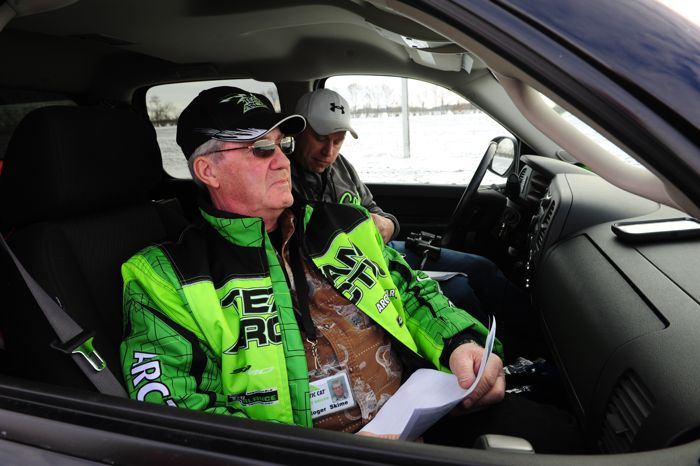
AI: Okay, last question. You spend days upon days with Roger Skime each race season. What’s something that sticks out from this past season that involved him?
Kloety: I was just thinking about his reaction to watching Zach Herfindahl racing down the ditch at the final USXC race in Warroad, Minn. We were trying to follow Zach with the truck and Roger said, “I’ve watched a lot of snowmobile races in my life. And I’m seeing Zach do things on a snowmobile that I’ve never seen anyone else do.”
When Roger says that, you know he’s seeing something pretty special!
AI: That’s awesome! Thanks for another great season Mike, and congrats to everyone involved with Team Arctic.
Kloety: Thank you and AI for all you do to promote the sport and Arctic Cat. Next time you are in town the Arctic Insider decal that found its way onto my work car is getting pretty faded.
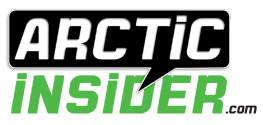

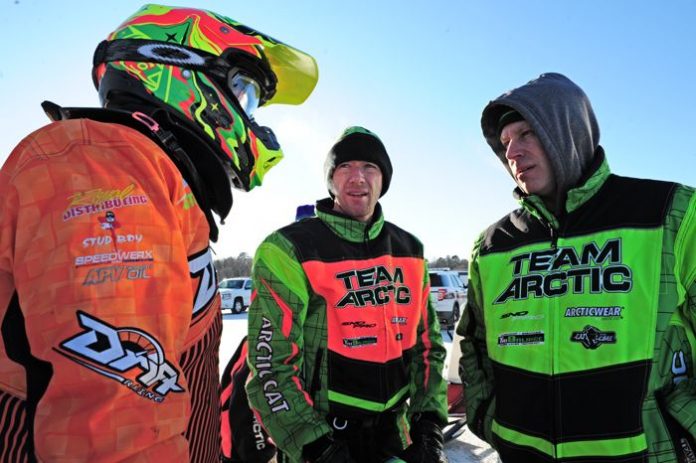
Great article John! Thanks for the interview Mike
I love the fact that Team Arctic is trying hard to get the weekend warrior back involved in snowmobile racing. I love hearing stories about the top racers from my time working all week on nights on 16 hour shifts and going to the track on the weekend with a tilt back trailer or pick up truck and winning some major race only to go back to work Monday. I know it will never go back to those days, but that I believe brought interest to snowmobile racing for average fans. Now racing is a job instead of a hobby.
Also, yes please bring back stock oval racing!! Champ sleds are cool, but ordinary fans cant relate to them and I think this is the reason for the major decline in ovals. The last stock oval sled I remember was a 2004 firecat F6 and not many people have the funds or knowledge to build custom oval sleds.
Please dont let Team Red steal anymore of our racers!
Great interview as usual John! We at King Kat Racing are super excited about Arctic Cat building some of these turn key Soo sleds. Our drivers are already chomping at the bit to get their hands on that sled and turn some laps!. Its great to see Mike and Team Arctic really putting a huge effort into the Soo! It was also such a treat to see Roger Skime at the Soo last season. When he was talking with us he was really disappointed he hadn’t made it to the Soo before this but he was super impressed with the facility and the race in general. Now we just need that Arctic Insider guy to make it out for the race!
I never tire of reading or talking about snowmobile racing, especially Team Arctic. Driving home from Lake Geneva last March it occurred to me that it wasn’t the end of the race season, it was simply the beginning of the next one! Thanks to all for this great interview.
its great to hear what the guy in charge thinks. more than just the press release info. sometime i want to see the race shop for myself.
Stock oval racing was the best type of racing to watch years ago,they need it back bad!! That’s what put people in the seats of races knowing they were going to see the same sled race as they had sitting in their yard!!!! I can remember the 94 zr ‘ s wiping the competition years ago and walking out of the race to ride home on the same sled!! That also helps sell sleds to,in my thoughts!!!! I lived about 30 mins away from Jim Herzig years ago and can remember talking to him years ago about sled setup,I can remember him saying to me these zr ‘ s handle so good I could duck tape the throttle and it would drive itself!! Sure do miss him!!! Thanks for the great article John!!! Keep em coming!!! Bleeding Green!!!!
Thanks for the write up John and the info Mike, the factory stuff is always the best to read.
I want to be on team Arctic in the next few years, when I’m done with school. This story is excellent. Did the Polaris racer blow over the flag in the one photo above?
Another great article John, thank you Mike for taking the time sharing your busy winter racing season education. I am sure every day is a new adventure. Sure do miss stock oval racing. Hope the other colors step up to the plate for stock oval racing.
Thanks for the nice words guys.
Mike is a class act, as are the people who work with him in the Race Dept. Lot’s of very dedicated people, all trying to help the many, many dedicated Team Arctic racers, crews and families. It truly is one great big team.
Steve: No, the Polaris racer did not blow over the flag. He actually went around it on the wrong side. Oops.